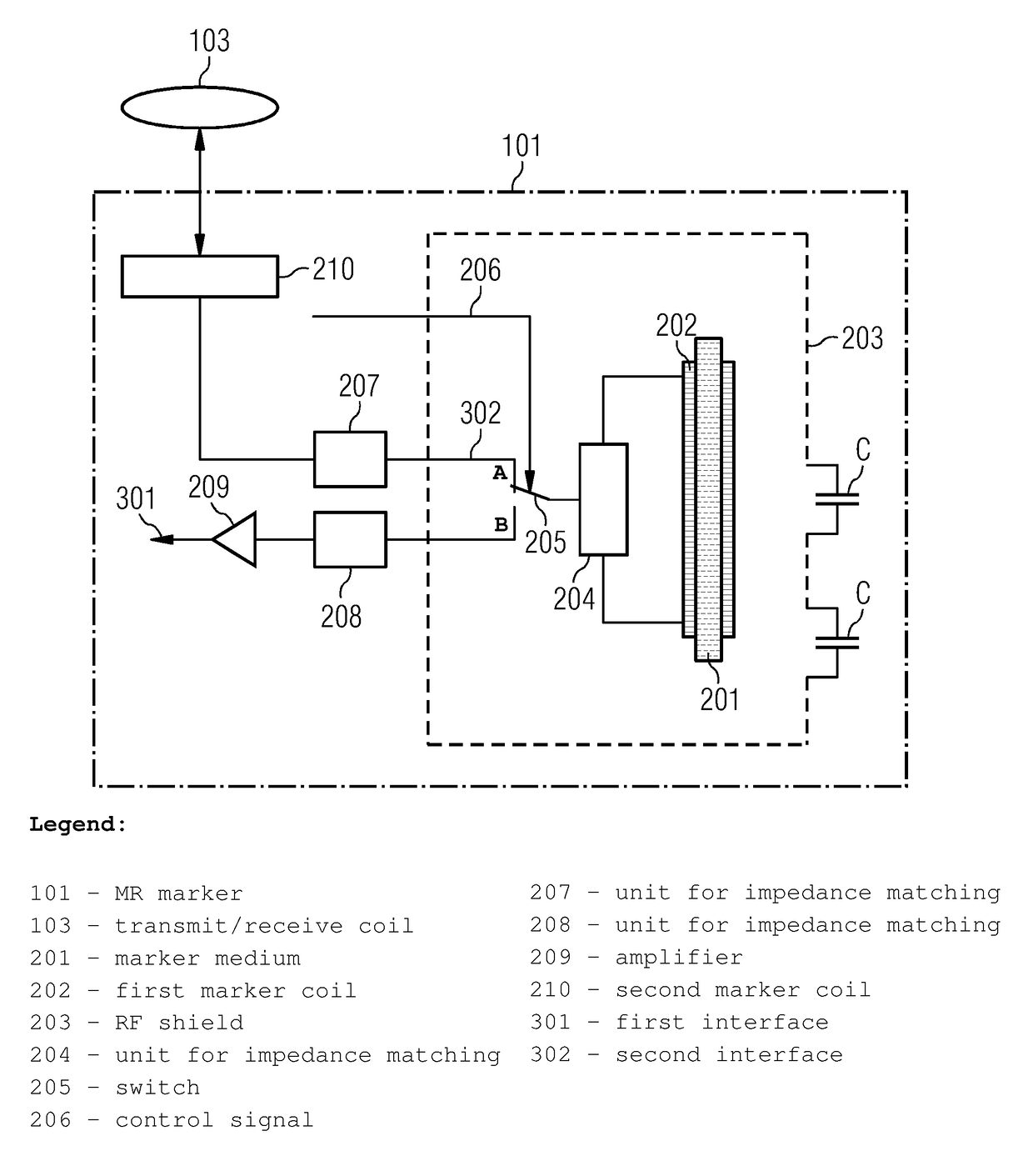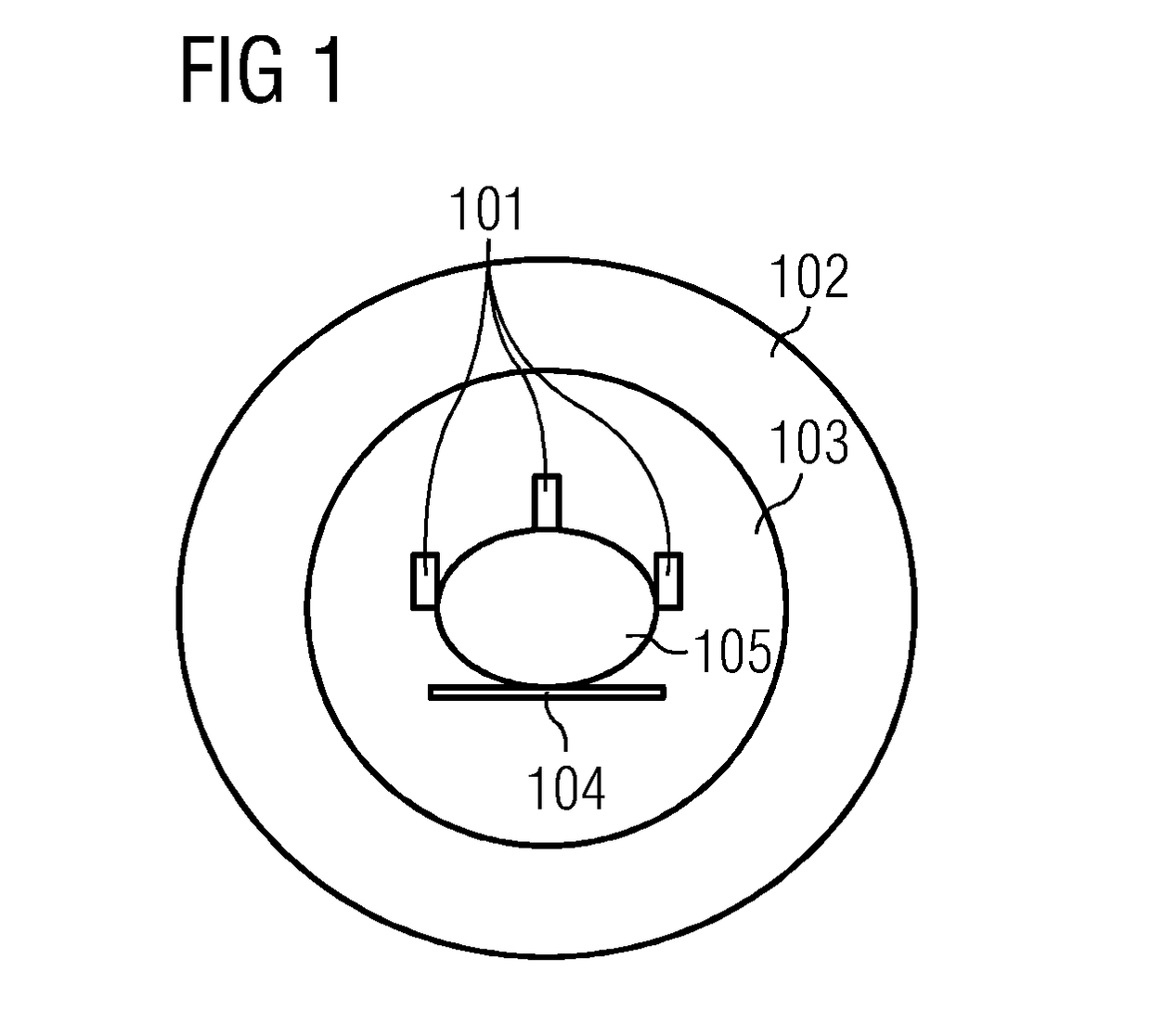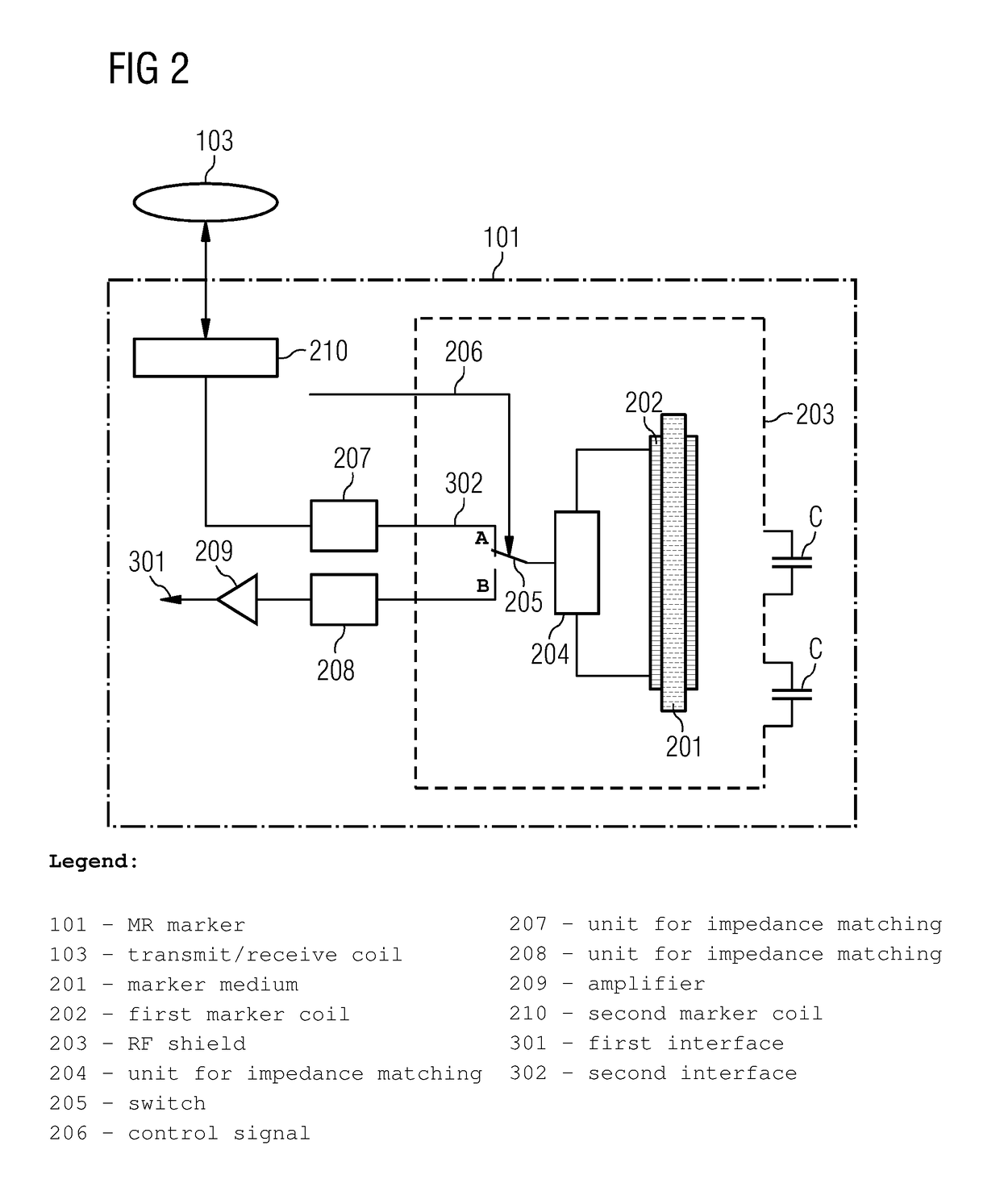MR marker for magnetic resonance imaging
a magnetic resonance imaging and marker technology, applied in the direction of magnetic measurements, instruments, measurement devices, etc., can solve the problems of reducing the diagnostic value of the mr image produced, the convolution of the mr image, and the extension of the measurement tim
- Summary
- Abstract
- Description
- Claims
- Application Information
AI Technical Summary
Benefits of technology
Problems solved by technology
Method used
Image
Examples
Embodiment Construction
[0033]FIG. 1 depicts an embodiment of a schematic representation of a magnetic resonance imaging scanner 102 with a transmit / receive coil (e.g., body coil) 103, three MR markers 101 arranged on an examination object 105, and a patient table 104. The transmit / receive coil 103 serves here to emit a TX field and to receive an RX field in the magnetic resonance imaging scanner. Alternatively, or in addition, the TX field and the RX field may also be respectively emitted and received by a local coil. The TX field and the RX field have the Larmor frequency fLarmor of the particles (e.g., protons) respectively concerned. The TX field excites the particles in the examination object, and, at the same time, in the marker medium 201 of the three MR markers 101. The excited particles produce MR signals and thus a receivable RX field.
[0034]FIG. 2 depicts an embodiment of schematic setup of an MR marker 101. The MR marker 101 includes a closed volume, surrounded here by a glass tube containing a ...
PUM
 Login to View More
Login to View More Abstract
Description
Claims
Application Information
 Login to View More
Login to View More - R&D
- Intellectual Property
- Life Sciences
- Materials
- Tech Scout
- Unparalleled Data Quality
- Higher Quality Content
- 60% Fewer Hallucinations
Browse by: Latest US Patents, China's latest patents, Technical Efficacy Thesaurus, Application Domain, Technology Topic, Popular Technical Reports.
© 2025 PatSnap. All rights reserved.Legal|Privacy policy|Modern Slavery Act Transparency Statement|Sitemap|About US| Contact US: help@patsnap.com



